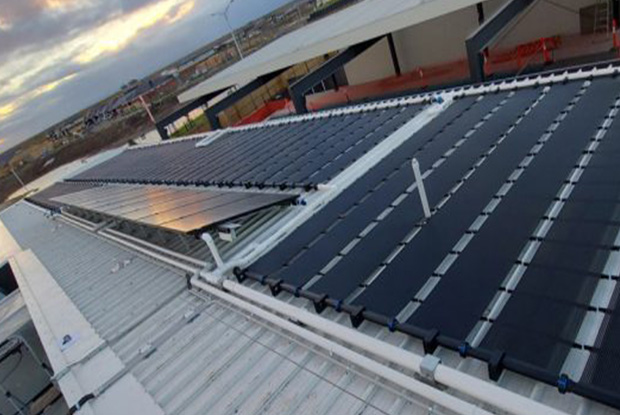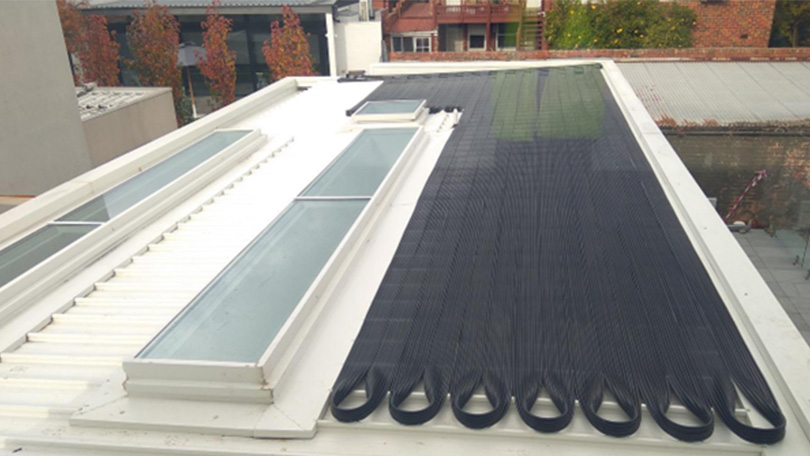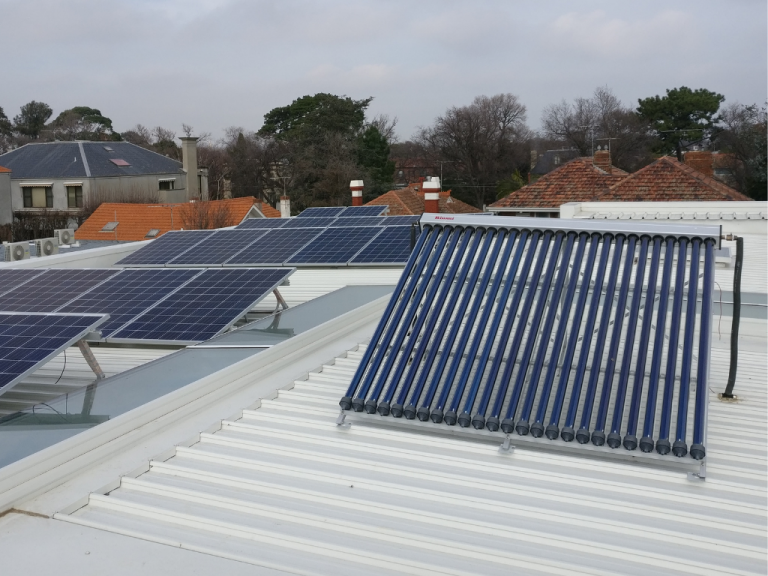Solar Thermal
Solar thermal systems generate hot water via the sun’s energy directly heating water. It is a very effective way of generating hot water on small to large scale projects. It is as simple as having solar collectors on a house for a home’s hot water supply or having a very large scale solar thermal array for a major aquatic centre. In both cases, it simply reduces the cost of heating water as the energy from the sun is free.
The main drawback of solar thermal systems is that they are only effective when the sun is shining and the climate is warm. In cold winter months, solar thermal systems need boosting with gas or electric heat pumps, which can be costly. In very few places will solar thermal systems offer hot water all year round.
Although solar thermal systems can be very effective, we often compare them with solar PV as they are usually placed on rooftops and take up valuable solar energy space. The important consideration is to weigh up the benefits of solar generated water versus solar power from solar PV, which can operate mechanical equipment to achieve a similar result. In summer a hot water tank is often hot by 9 or 10 in the morning, thus the solar energy produced for the rest of the day is not utilised.
Solar PV, on the other hand, keeps delivering whilst the sun is shining. Some engineers use solar PV to run electrical hot water systems (air sourced or geothermal) and consider this more effective than having solar thermal taking up roof space.
Solar PV/Thermal (PVT)
An interesting mix of solar energy technology has emerged in recent years: solar PV panels with solar thermal system embedded in the solar PV panel.
That is, water flowing through the back of a solar PV panel. This has the combined effect of heating water and adding to solar PV energy production in high heat environments. Solar PV production can drop by over 15% in temperatures above 25oC.
We tend to assess the validity of solar thermal in relation to roof space available and the competing energy production from solar PV. Always we are looking for an optimal mix of technologies to apply and modelling the actual outputs against planned efficiencies.


Solar thermal systems
Solar thermal systems can be made of rubber, as shown in the photo to the left, or glass as shown below. Rubber is lower cost than glass. Both systems can work very effectively. The glass evacuated tubes can generate comparatively more heat when the sun is not as hot.
The heat is transferred through the glass into the copper pipes that run through the tubes and contain water.
- Both systems, glass and rubber systems can be large scale commercial or small scale domestic.
- Both are direct water heating systems.

